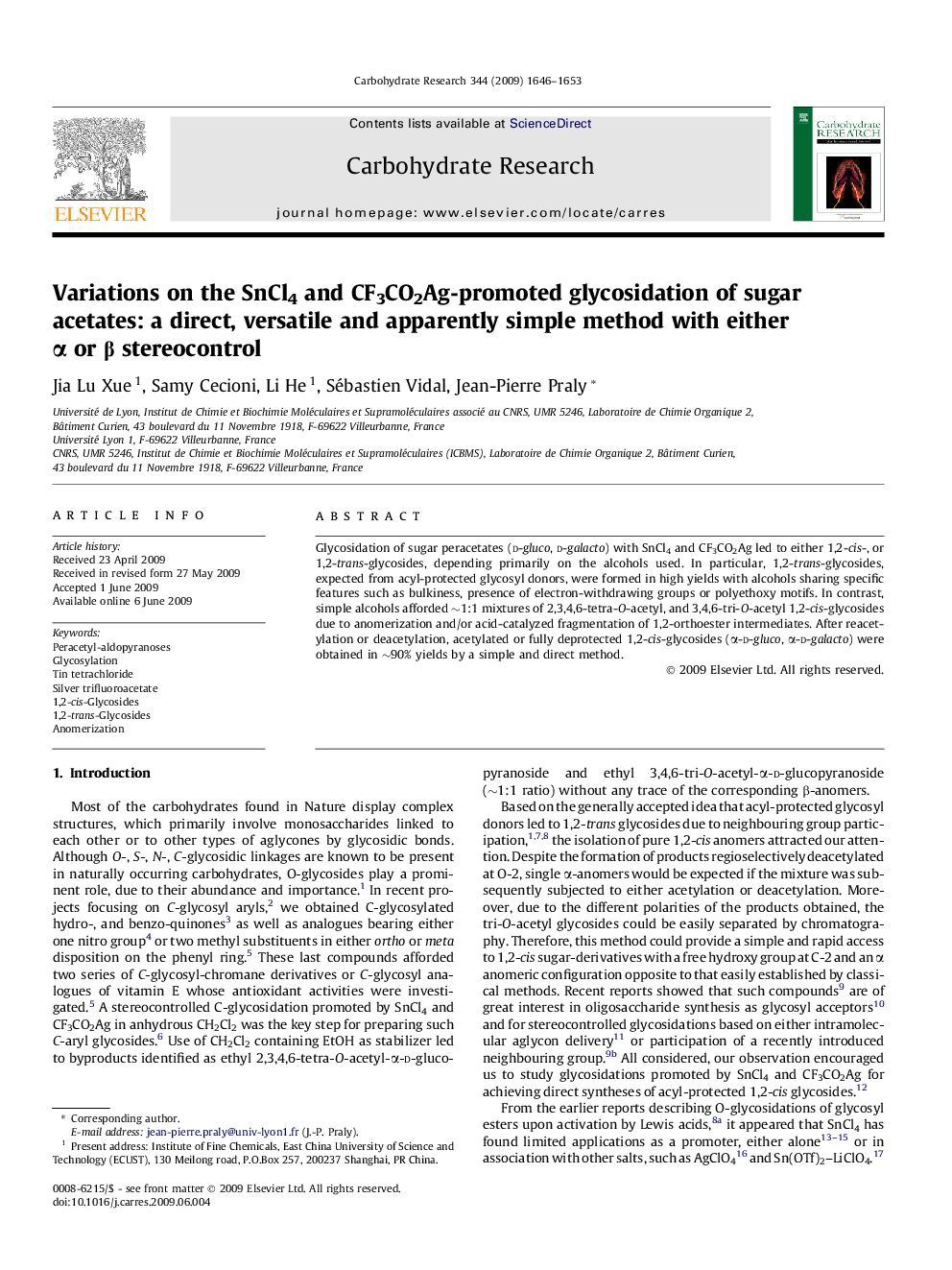| Article ID | Journal | Published Year | Pages | File Type |
|---|---|---|---|---|
| 1388258 | Carbohydrate Research | 2009 | 8 Pages |
Glycosidation of sugar peracetates (d-gluco, d-galacto) with SnCl4 and CF3CO2Ag led to either 1,2-cis-, or 1,2-trans-glycosides, depending primarily on the alcohols used. In particular, 1,2-trans-glycosides, expected from acyl-protected glycosyl donors, were formed in high yields with alcohols sharing specific features such as bulkiness, presence of electron-withdrawing groups or polyethoxy motifs. In contrast, simple alcohols afforded ∼1:1 mixtures of 2,3,4,6-tetra-O-acetyl, and 3,4,6-tri-O-acetyl 1,2-cis-glycosides due to anomerization and/or acid-catalyzed fragmentation of 1,2-orthoester intermediates. After reacetylation or deacetylation, acetylated or fully deprotected 1,2-cis-glycosides (α-d-gluco, α-d-galacto) were obtained in ∼90% yields by a simple and direct method.
Graphical abstractFigure optionsDownload full-size imageDownload as PowerPoint slide
